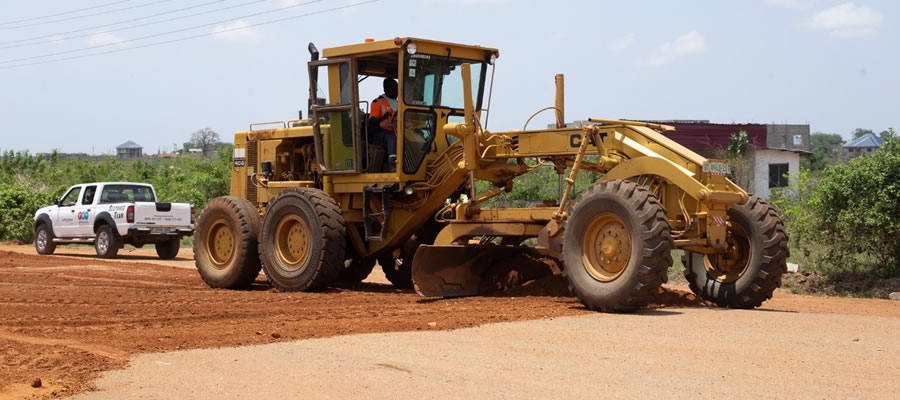

Population size and growth
The 2010 Population census results as shown in Table 1.10 indicates that the population enumerated in the Municipality is 109,864 made up of 48.7 percent males and 51.3percent females, giving a sex ratio of 94.5.The sex ratio of 94.5 means there are about 94 males to every 100 females in the district. The 0-4 year age group has the highest proportion (13.5%) followed by the 5-9 age group (11.0%). More than half (54.1%) of the population were below age 24 years. The proportion aged 60 years and older was 5.5 percent in the district. Young adults and (15-29) constitute 30.2 percent of the population. For the purposes of population projection for the period of the Medium Term Development Plan 2018 -2021, the 2021 population is estimated at 145,705 and that of 2017 is also estimated at 131,488.
Age and Sex Composition
Table 1.11 presents the age structure of the population in the Municipality. The age structure of the district shows a broad base that gradually declines with increasing age as in Figure 1.3. The broad base of the population pyramid indicates that the population of the district is very young. This means the Assembly would have to use much of it resources for the provision of schools, health care facilities and create employment opportunities for the youth in the district.
Figure1. 3 Population pyramid depicting the Age and Sex structure
Source: MPCU, 2017
Dependency Ratio
The dependency ratio in the district is 58.1 percent (Table 1.12). This means that on average for every 100 people aged 15-64years, there are about 58 people depending on them for survival in the Municipality. The ratio of 58 persons depending on every 100 working population is informed by the broad base of the population pyramid. The figure implies that the working population are burdened due to population growth. This has implication on employment avenues, quality of education, and life expectancy among other demographic indications. There is therefore a clarion call on the Assembly to initiate and implement policies to curb population growth, with the help of the government. Also employment avenues should be broadened to enhance access. The table also shows that, child dependency ratio (54.5%) is higher than the old age dependency ratio (3.5%). The dependency ratio in rural areas (58.7%) is relatively higher than the dependency ratio in urban areas (58.0%). Table 1.12 further shows that 90.4 percent of the population are found in the urban areas whereas 9.6 percent of the population are in rural areas.
Population Density
Population density is commonly represented as people per square kilometer, which is derived simply by dividing area population by land area. The Municipality has a projected population of 134,907 and a land area 209sqkm. This leads to a population density of 459 people per square kilometer. This means that 459 people live on each square kilometer of Kpone Katamanso Municipal Assembly Land area.
The table above indicates the population projections for the plan period. The annual growth rate of the Municipality is 2.6%. This growth rate was taken from Tema Metropolitan Assembly (TMA) as a proxy because; the assembly was carved out of it. Also, as at the time this assembly was created, the most recent population and housing census (2010) had already been done. Since to calculate for a growth rate, there must be data on two census years, which this district does not have, it is then reasonable to use the growth rate of TMA for projections for this Municipality until adequate data is acquired.
Gender Equality
Gender refers to the role associated being male or female and the relationships between them. These attributes, opportunities and relationships are socially constructed and learned through socialization process. The Municipality has men or husbands as heads of the family. Most men are the bread winners of their family, however, this role is undertaken by some women who are now in active formal work. Women take up domestic chores, in keeping their home and family. Farming especially is taken up by men and women, but predominantly by men. For communities along the Sea, Fishing is the main occupation by men, while women are fishmongers. Men tend to have economic advantage (92.5) over women (90.7) per the 2010 population housing Census.
Ownership of land is human right problem as men and male children are at an advantage in owing and inheriting land over women and girls respectfully. Political participation for women is very low as compared to men. For instance the Assembly representation has only two women but they are even Government Appointees. In the education sector, per the 2010 population census, 49.8% females were literate, while 51.2% were males. The dropout from school was more for females as opposed to their numbers which were more in their intake than boys. Girls in the Municipality are victims of child marriages due to poverty and illiteracy. Additionally, street children cuts across girls and boys in the Municipality .The gaps as analyzed is a concern for our development, because both sexes play important roles. The gaps creates unfairness and denies access for women especially to thrive. There is a conscious need to create access, awareness, fairness, empowerment, equity and equality for women especially for the development of the Municipality and by extension the Nation as whole
Migration
The Kpone Katamanso Municipal Assembly has a futuristic potential for population growth and for that matter growth rate. Migration serves as one of the important parameters in determining population increase and decrease aside death rate. The Municipality for some years now have in-migration from the Tema Municipal, Accra and all over the country due the availability of Land its proximity to Tema and the free zone area which is an industrial hub. A lot of companies like BOST, CARGIL, TOR, BEL-AQUA, B5, and GROUP 5 coupled with other social amenities like roads, water etc. serves as pull factors.
The 2010 population and housing census data on migration in the Municipality supports this the afore-mentioned. 70.4 per cent of the District’s population are migrants who were living elsewhere and have moved into Municipality. The dynamics in the population of the Municipality poses serious challenges and threats. The medium term development plan for 2017- 2020 will seek to expand social amenities to absorb the expected increase of population through migration, expand employment avenues, expend its resources on sanitation etc. The growing migration also poses threat of security due to increase in armed robbery and hence the need for the Municipal security committee to step up its game. The potential labor force can be thrived on as a Municipality.
Date Created : 4/25/2023 12:00:00 AM












 facebook
facebook
 twitter
twitter
 Youtube
Youtube
 +233 593 831 280
+233 593 831 280 0800 430 430
0800 430 430 GPS: GE-231-4383
GPS: GE-231-4383 info@ghanadistricts.com
info@ghanadistricts.com Box GP1044, Accra, Ghana
Box GP1044, Accra, Ghana